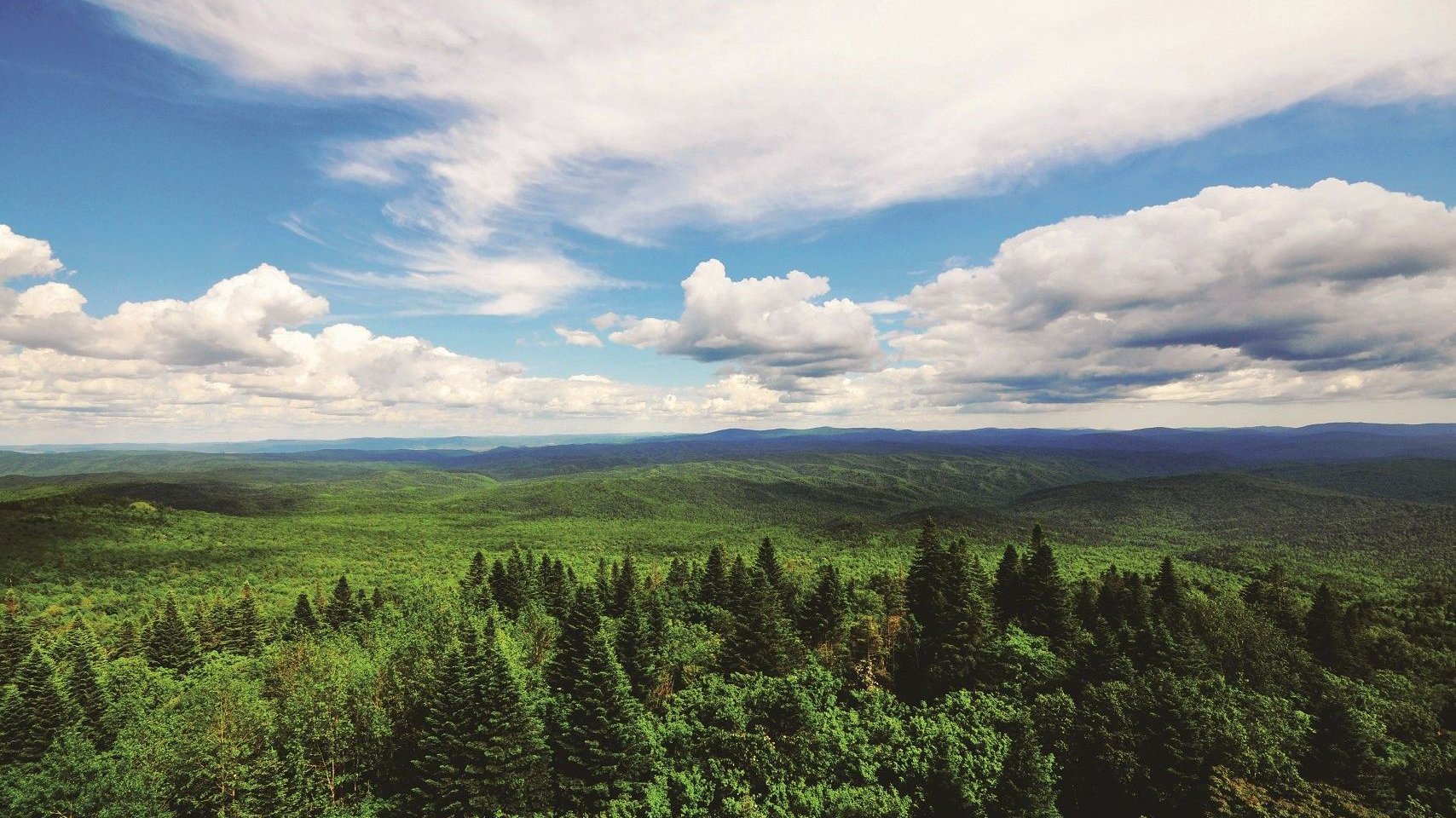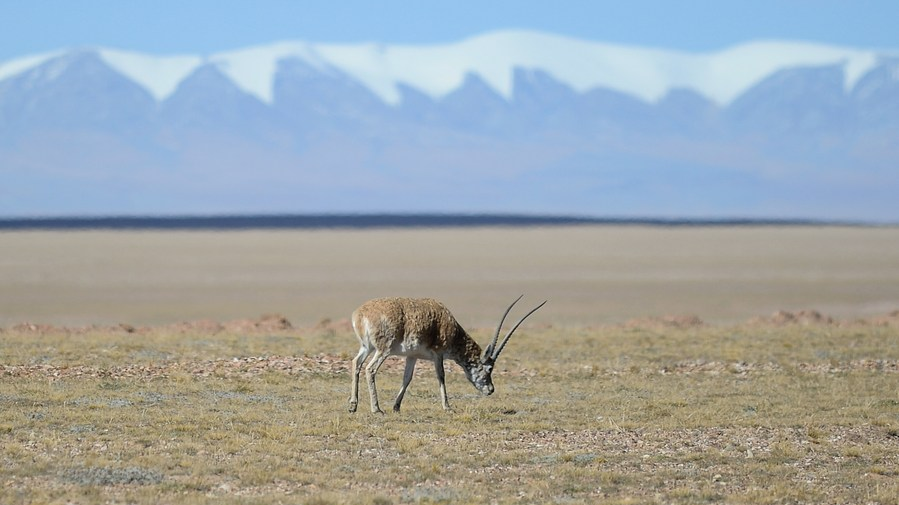
Photo taken with a monitoring camera shows a wild Siberian tiger in the Northeast China Tiger and Leopard National Park in northeast China, April 14, 2021. /Xinhua
Photo taken with a monitoring camera shows a wild Siberian tiger in the Northeast China Tiger and Leopard National Park in northeast China, April 14, 2021. /Xinhua
In the late 1990s, not many people saw Siberian tigers or Amur leopards in the wild.
The two most endangered carnivores on the planet, previously found mainly in southeastern Russia and northeast China, almost became extinct.
In 2015, the big cats were rediscovered in northeast China's Jilin Province by a research team at Beijing Normal University. This was after the team, which focused on tiger and leopard research, had carried out nearly a decade of fieldwork searching for the rare beasts.
Researchers installed a network of 3,000 infrared cameras to monitor the wildlife species, which were crucial in finding endangered animals.
The protection work was facilitated by the launch of a Space-Ground Integrated Monitoring Platform in Northeast China Tiger and Leopard National Park. As the world's first real-time monitoring system covering air and land, it is supported by technology including cloud computing, the Internet of Things, big data and Artificial Intelligence (AI).
The technology-driven monitoring system is more effective than the manual processes used in the past. The data can be transported back to scientists thousands of kilometers away.
"In areas covered with dense forests, and steep, rugged terrain, it is very difficult and inefficient for scientists to carry out the research and protection work only on foot," said Wang Jun, a researcher from the Institute of Ecological Conservation and Restoration of the Chinese Academy of Environmental Planning.
"Now we can collect much more comprehensive information on the living and growth status of animals and plants with the collaboration of various technologies," Wang told CGTN.
The collaboration that Wang refers to is a process of information collection, transmission and analysis. As monitoring cameras are densely deployed in the area and connected by the 5G network, the information they collect is quickly transmitted and analyzed by AI and big data technology. Scientists can get biological information on their mobile phones or computers to keep up to date on the current status of animal populations.
In southwest China's Yunnan Province, over 600 infrared cameras and 20 video cameras are connected to a 5G network to monitor the wildlife species. The recognition rate of elephant species has risen significantly to 95 percent compared with human observation with the help of AI technology, Wang added.

The Northeast China Tiger and Leopard National Park in northeast China. /Courtesy of National Forestry and Grassland Administration
The Northeast China Tiger and Leopard National Park in northeast China. /Courtesy of National Forestry and Grassland Administration
As of April 2022, over 30,000 images of Siberian tigers and Amur leopards, as well as 10 million images of other wildlife, had been transmitted by 20,000 infrared cameras, covering an area of 14,000 square kilometers.
Tracking wildlife and monitoring endangered species is an essential step in their conservation. By December 2022, there were more than 50 Siberian tigers and 60 Amur leopards, up from 27 and 42 respectively in 2015.
The survival rate of cubs rose from 33 percent before 2016 to the current 50 percent, according to the park's management office. Normally, around 25 to 50 percent of all cubs die before they are one year old.
The Northeast China Tiger and Leopard National Park is among the first five national parks that China established in 2021 for better ecological conservation.
The five national parks cover a total area of over 230,000 square kilometers and conserve nearly 30 percent of the country's key wildlife species, according to the National Parks Research Institute.
"The government expenditure in 2022 on the construction of national parks was 4.2 billion yuan ($600 million), doubling that of the previous year," said Tang Xiaoping, director of the administration's National Parks Research Institute, during an interview with the Oriental Outlook.
Most of the expenditure is on ecological conservation supported by advanced technology, Tang added.

A Tibetan antelope is seen at Hol Xil area of Sanjiangyuan National Park in northwest China's Qinghai Province, September 28th, 2021. /Xinhua
A Tibetan antelope is seen at Hol Xil area of Sanjiangyuan National Park in northwest China's Qinghai Province, September 28th, 2021. /Xinhua
Back in 2007, the Chinese government proposed the concept of ecological civilization and decided to construct the national park system in 2013.
"The national park system in China will be the largest in the world. The average land area of the first five national parks is 46,000 square kilometers. In comparison, the average land area of the 62 U.S. national parks is less than 3,400 square kilometers, according to Yang Rui, dean of the Institute for National Parks in Tsinghua University, when speaking at a panel discussion held by National Science Review in August 2022.
To strike a balance between ecological protection and the improvement of people's livelihood, China has adopted regulations allowing local residents to run eco-friendly businesses and prioritizing them in employing park rangers and other related jobs.
In Sanjiangyuan National Park in northwest China's Qinghai Province, more than 17,200 local herdsmen were offered jobs as park rangers, and their annual household income increased by 21,500 yuan ($3,082.8) on average, according to the Ministry of Ecology and Environment.
"The intelligent management of natural resources also brings new opportunities to local economic development, as it helps create and sustain smart tourism," said Wang.
People who cannot make the trip to scenic spots can start an online visit to the scenic areas covered by 5G signals, watching livestreams of popular animals and communicating with zookeepers.